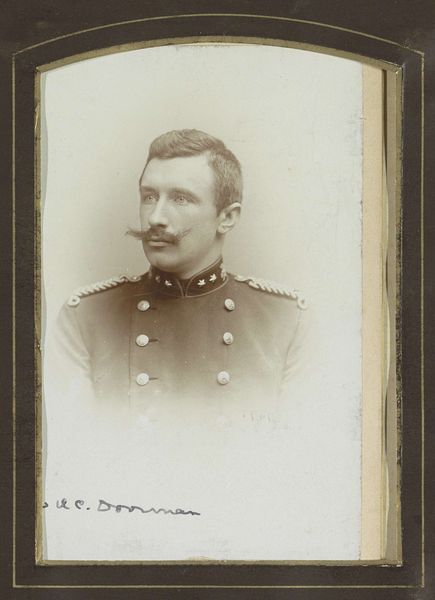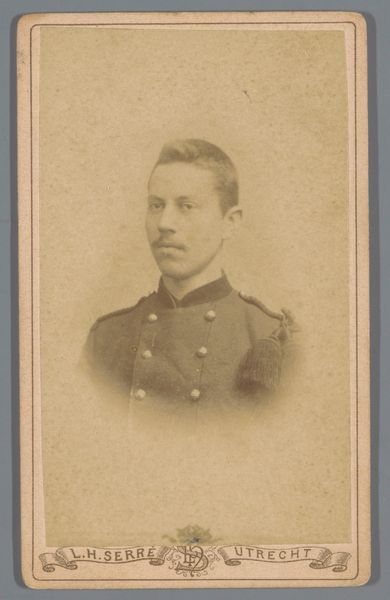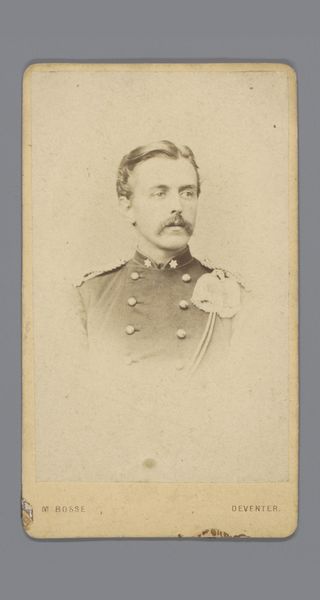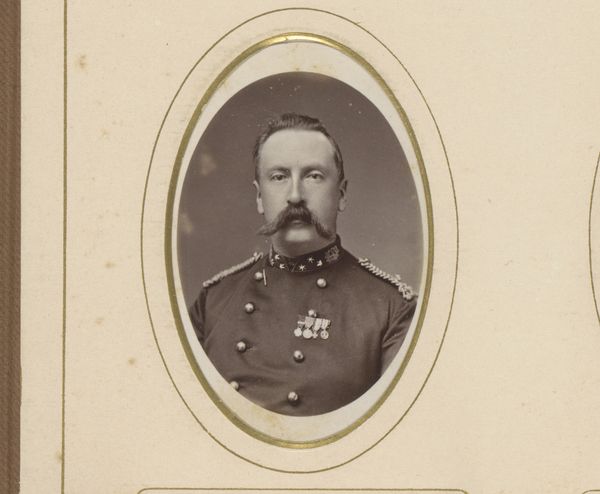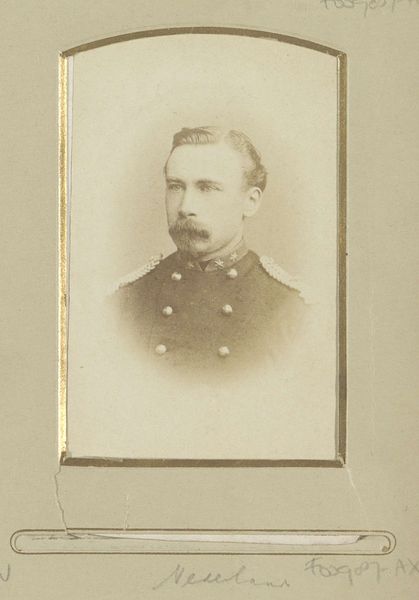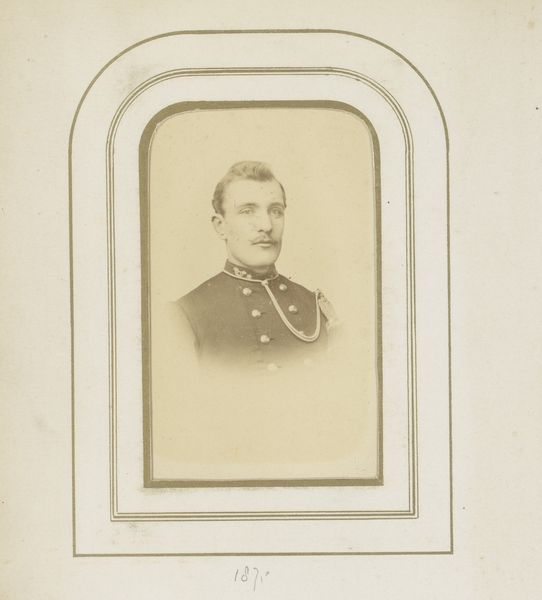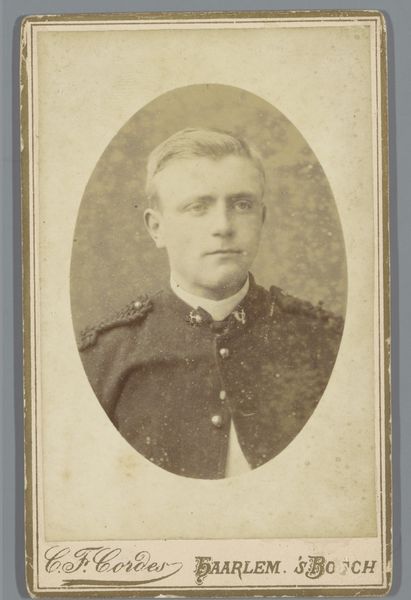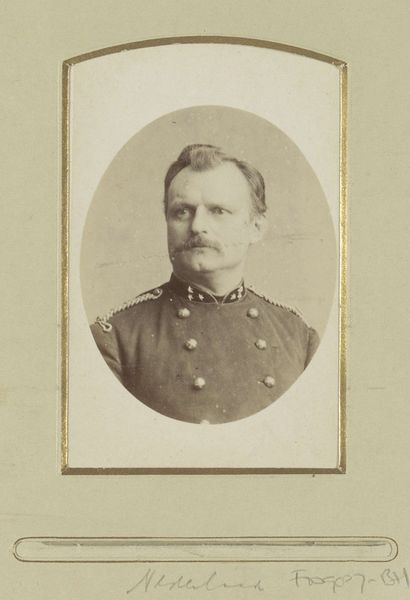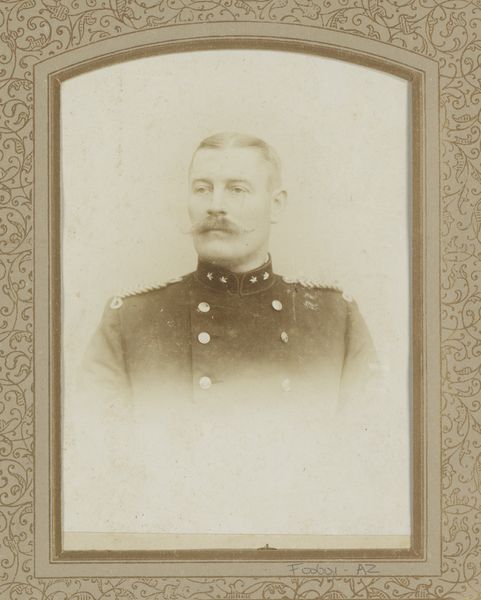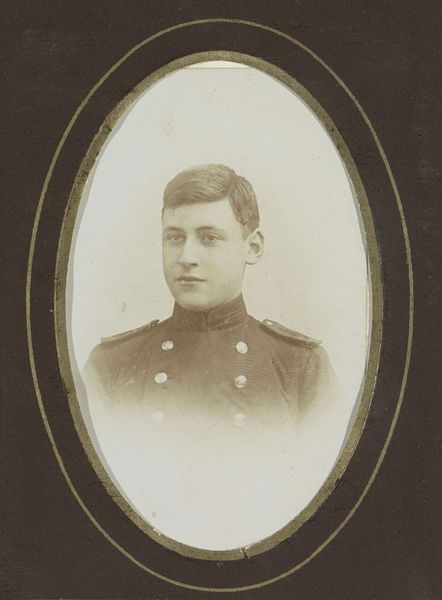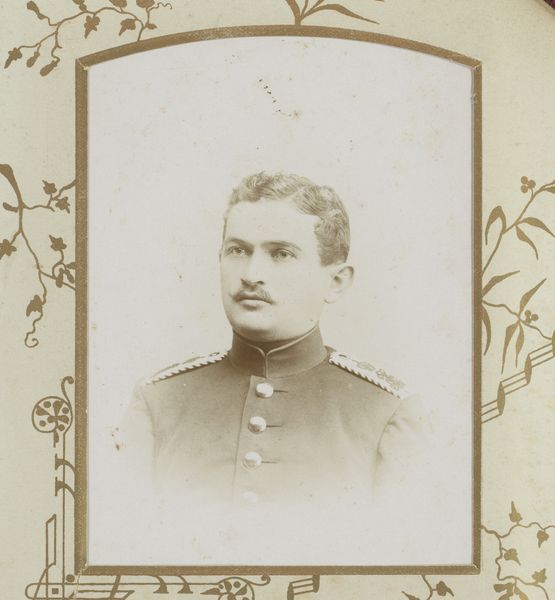
photography, gelatin-silver-print
#
portrait
#
portrait image
#
photography
#
portrait head and shoulder
#
framed image
#
gelatin-silver-print
#
history-painting
#
portrait art
#
fine art portrait
Dimensions: height 102 mm, width 64 mm
Copyright: Rijks Museum: Open Domain
Editor: Here we have Franz Reissig's "Portret van een man in een militair uniform," a gelatin silver print dating from around 1883-1895. I'm struck by the texture of the print itself, that creamy, almost tactile surface. What aspects of this portrait draw your eye? Curator: For me, it's the photograph’s function as a commodity that stands out. It’s not just an image; it’s an object produced and consumed. Think about the materials themselves—the silver, the gelatin, the paper—and the labor involved in their extraction, refinement, and ultimately, their assembly into this framed portrait. It speaks volumes about the industrialization of image-making in the late 19th century. Editor: So, beyond the individual depicted, you’re interested in the broader system that allowed this portrait to exist? Curator: Exactly! Consider the military uniform too. It's a fabricated thing, assembled from textiles, metal, and thread. Its purpose goes far beyond simple function and comfort; it's all about imposing power and displaying rank through visual cues and markers that solidify social stratifications. This then has the intended effect of inspiring discipline and control, where photographic portraits, affordable to some at this point, were integral parts of the larger industrial-military complex. Editor: It's like the photograph captures not just a person, but an entire mode of production! Curator: Precisely. What does analyzing it in terms of material and labor uncover, compared to simply interpreting the sitter’s psychology? What does it reveal about photographic materiality and military culture? Editor: I never considered how much the means of production shaped the portrait's message itself. It pushes me to think about art as more than just an isolated creative act. Curator: Indeed, thinking about the materials and context surrounding an artwork lets us understand its role in a much larger world.
Comments
No comments
Be the first to comment and join the conversation on the ultimate creative platform.
